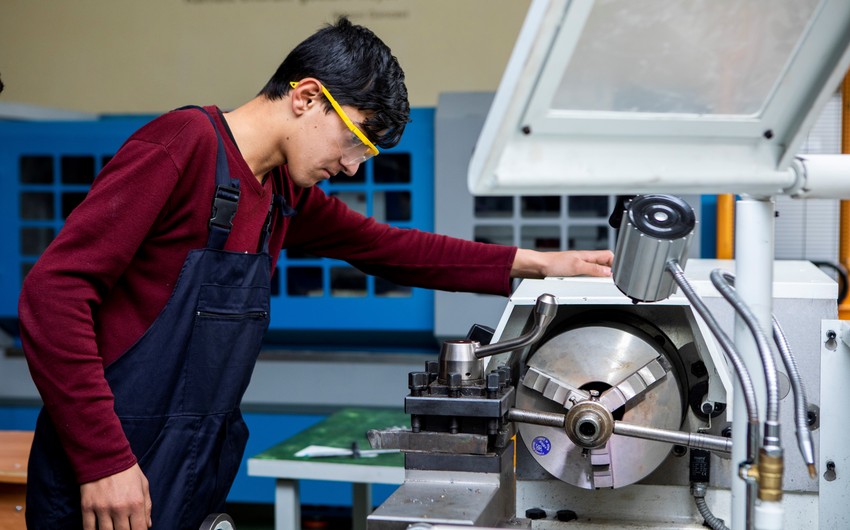"Report" presents a blog by Kestutis Jankauskas, Head of EU Delegation to Azerbaijan,
Alessandro Fracassetti, UNDP Resident Representative in Azerbaijan and
Parviz Yusifov, Director of the State Agency for Vocational Education in Azerbaijan.
Azerbaijan's labor market is changing rapidly in line with the growing diversification and digitalization of the economy, calling for new types of training and skills to ensure that young people can take up new opportunities and that no-one is left behind.
Modernizing and investing in vocational education and training is at the heart of the Government's, the European Union's and UNDP's strategic vision for preparing the youth of Azerbaijan to take up the future jobs and adapt to the changing landscape of labor markets.
For the past three years, we have been working closely together to help create inclusive training opportunities through vocational education in skills demanded in the labor market.
Such training has a crucial role in supporting the modernization and diversification of the country's economy, helping to future-proof and expand newly emerging industries while preserving viable traditional sectors.
Today more than ever, the availability of a skilled and competent workforce is critical to achieving the goal of a sustainable, diversified economy.
Recent studies have shown that 6 out of 10 jobs in the future will require a vocational training qualification.
Nearly 45% of adults have the potential for upskilling and reskilling (a figure estimated before the pandemic); the crisis, combined with the twin transitions, will make upskilling and reskilling even more important.
We are confident that the vocational training sector can lead Azerbaijan into the digital future by retaining and growing jobs, preventing skills shortages, and boosting the economy by becoming more agile and accessible to workers of all ages.
By investing in high-quality vocational education, our strategy further contributes to the Sustainable Development Goal of ensuring inclusive and equitable quality education and promoting lifelong learning opportunities for all (SDG4).
Our partnership has already achieved some impressive results over the past three years, including the modernization of equipment and infrastructure in VET schools located in Ganja and Jalilabad, the provision of professional development training for management and teaching staff in these regions, and the development of new curricula, teaching modules and short courses in areas such as IT and programming and fashion design.
Responding to the outbreak of COVID-19, we swiftly adapted these VET courses' delivery from primarily face-to-face teaching to TV lessons and online learning.
We've also helped boost graduates' skills and employability by involving local businesses in the educational process. These private businesses have been providing early internship opportunities for future graduates and offering them jobs upon graduation.
Another notable achievement to ensure greater inclusiveness in vocational education is that the number of women students involved in VET in the Jalilabad region has increased from below 2 percent to 10.6 percent over the past two academic years.
Furthermore, our efforts to reshape the VET system by bringing in international best practices and improving VET education's overall image has led to several VET studies applicants by 27% compared to the previous academic year.
We very much believe this trend will continue.
Any effective strategy to modernize VET needs to ensure that courses are of high quality and matched to the labor market's needs and must promote the status of VET and the recognition of VET qualifications.
This is why we have already undertaken several public-awareness initiatives to revamp the image of vocational training and introduced new mechanisms to recognize and validate formal and non-formal learning. (The first certifications were awarded a month ago.)
This year will see the launch of a new four-year joint project to bring about a major modernization of the vocational education sector, scaling up these efforts to promote VET and bringing all key stakeholders together to change the discourse around vocational education, benefitting some 5,000 students at VET centers throughout the country through the modernization of their institutions.
The underlying objective of all our efforts to modernize VET is building forward towards a more inclusive, equitable, and sustainable economy with quality training and employment opportunities for all — especially the most vulnerable whose futures are at stake in these challenging times.


 https://static.report.az/photo/b76e0338-98ad-3e4c-b860-6a5c5cf180c7.jpg
https://static.report.az/photo/b76e0338-98ad-3e4c-b860-6a5c5cf180c7.jpg

